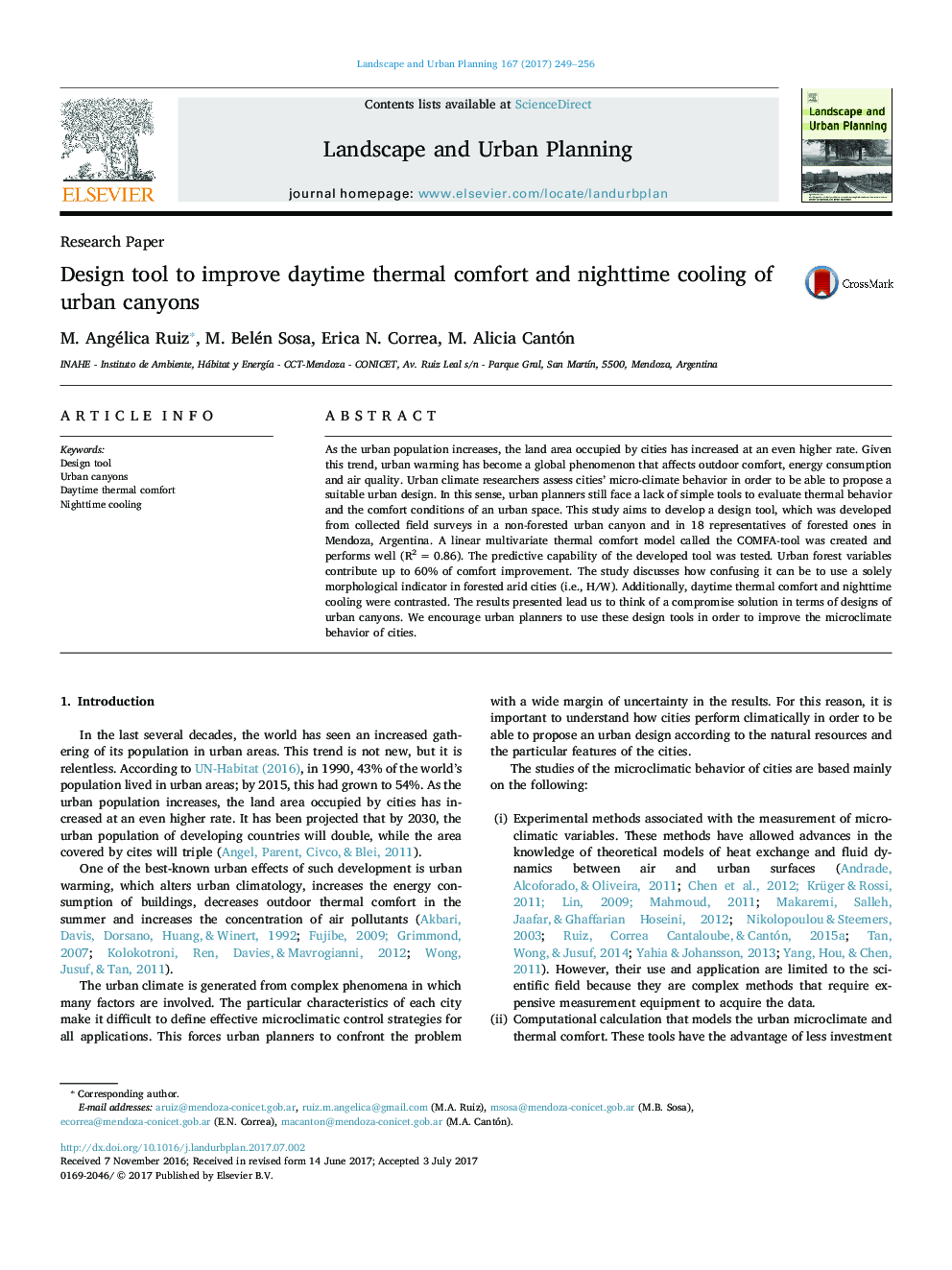| Article ID | Journal | Published Year | Pages | File Type |
|---|---|---|---|---|
| 5114956 | Landscape and Urban Planning | 2017 | 8 Pages |
Abstract
As the urban population increases, the land area occupied by cities has increased at an even higher rate. Given this trend, urban warming has become a global phenomenon that affects outdoor comfort, energy consumption and air quality. Urban climate researchers assess cities' micro-climate behavior in order to be able to propose a suitable urban design. In this sense, urban planners still face a lack of simple tools to evaluate thermal behavior and the comfort conditions of an urban space. This study aims to develop a design tool, which was developed from collected field surveys in a non-forested urban canyon and in 18 representatives of forested ones in Mendoza, Argentina. A linear multivariate thermal comfort model called the COMFA-tool was created and performs well (R2Â =Â 0.86). The predictive capability of the developed tool was tested. Urban forest variables contribute up to 60% of comfort improvement. The study discusses how confusing it can be to use a solely morphological indicator in forested arid cities (i.e., H/W). Additionally, daytime thermal comfort and nighttime cooling were contrasted. The results presented lead us to think of a compromise solution in terms of designs of urban canyons. We encourage urban planners to use these design tools in order to improve the microclimate behavior of cities.
Keywords
Related Topics
Life Sciences
Agricultural and Biological Sciences
Ecology, Evolution, Behavior and Systematics
Authors
M. Angélica Ruiz, M. Belén Sosa, Erica N. Correa, M. Alicia Cantón,
